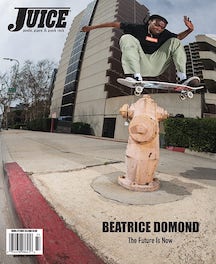Inside the Dream Palace: The Life and Times of New York’s legendary Chelsea Hotel Interview with author, Sherill Tippins Interview by Vans Davey
A conversation with Sherill Tippins, author of Inside the Dream Palace: The Life and Times of New York’s legendary Chelsea Hotel, about the making of the book as well as fascinating stories that didn’t make it into the book. Read on.
When did you decide to become an author?
In college, I studied documentary filmmaking, and went on to work as a screenwriter-for-hire after I moved to New York, but I didn’t like the lack of control screenwriters have over the end product, and didn’t like having to depend on a director or studio to hire me. As a writer of books, I realized, I could choose my own subject and develop it according to my own vision—and maybe still see the story on the big screen later if someone picked it up for adaptation. By the time I came around to this way of thinking, though, I’d already started having children. I spent about a decade writing how-to books and ghostwriting as a way of learning about the publishing industry, and then moved on to literary non-fiction once my kids were older. By then, I’d amassed a sizable collection of stories I wanted to tell – enough stories to last the rest of my life, I expect.
How did you decide to write about the on-goings at the Chelsea Hotel?
A man from London whom I’d just met in 2005 told me he was staying there, and when I expressed surprise that he’d chosen to stay in a rather run-down hotel with no room service, he took it upon himself to educate me about the Chelsea’s wonderful creative culture. He suggested I write a history of the Chelsea, and I did some casual research while working on another project, but I wasn’t convinced to focus on the Chelsea until the hotel itself insisted on it. It happened one day as I was crossing West Twenty-Third Street during a rainstorm: I glanced up to see the Chelsea’s gothic silhouette superimposed against the roiling dark clouds, its rooftop trees waving wildly as though to get my attention. Just then, an enormous bolt of lightning flashed directly over the Chelsea, its two forks enclosing the building between them. It seemed like such an omen that I gave in and soon afterwards made an appointment to interview the co-owner and manager, Stanley Bard. Through Stanley, and later interviews with many of the tenants, I fell in love with the hotel.
What is your motivation for writing this book?
My primary motivation was sheer fascination with the rich and unique quality of the story. There has never been another place like the Chelsea Hotel, and I felt it was crucial to record as many of the interactions and creative activities that went on there. Over the course of the six years it took the complete the book, though, as I saw Stanley Bard and his son expelled by the board of the directors, the hotel sold, and a new owner take over the hotel, I hoped the book would heighten awareness of the value of the hotel’s function in helping maintain New York City’s status as an artistic and cultural dynamo, so that perhaps its function wouldn’t be destroyed. The Chelsea’s physical façade is landmarked by the city; it’s tragic that its function as an artists’ residence isn’t also protected now that it’s served that function for New York for 130 years.
Describe your book in a few words.
It’s a biography of the largest and longest-lived artists’ community in the history of the world.
Can you tell the readers a little bit about the history of the Chelsea Hotel?
The Chelsea was originally not a hotel but a cooperative residence created by Philip Hubert, a French refugee from the 1848 uprising in Paris. The idea was to establish a creative community that could spark a true American culture, as opposed to the pale mimicry of European ideas that was fashionable at the time. The way to do this, Hubert believed, was to 1) keep living expenses low, so residents could spend less time earning money to support themselves and more time doing what they enjoyed; 2) mix people of all different economic levels and backgrounds together to stimulate discussion and new ideas; 3) provide plenty of places to socialize as well as options for privacy; and 4) place this community in the middle of a city, where a constant flow of visitors, access to job opportunities and tools for work, and a steady supply of cultural activities could keep residents on their toes. Hubert structured his building, originally called the Chelsea Association Building, as a self-enclosed community of 80 apartments whose three-foot-thick walls made them as sound proof as private homes. But he varied the sizes of the apartments on each floor so that wealthy and less-wealthy people lived side by side; provided hallways “as wide as a village street” to encourage them to linger and chat, installed private dining rooms, a lobby, and a rooftop promenade for them to socialize together, give performances, etc., and created a beautiful central winding stairway decorated with bronzed-iron passionflowers to give the shared home an aura of grace and grandeur. By renting a third of the apartments to pay for the building’s maintenance, and sharing the costs of fuel, food, and personal services, the original occupants were able to embark on the creative life that Hubert envisioned – a life that has continued at the Chelsea ever since, even as its origins have been obscured over time.
What types of creative people visited the hotel?
All types – not just artists but entrepreneurs, social activists, and other kinds of visionaries, along with ordinary working people and transient tourists whose presence has fed the creative dynamo that is the Chelsea Hotel. The top floor of the Chelsea consists of beautiful art studios, so there have been painters there from the beginning. Writers and musicians have always loved the sound proof walls. Dancers find it pleasing to rehearse in the spacious, high-ceilinged rooms. Filmmakers and photographers have long used the Chelsea itself as inspiration.
Name some of the bands and musicians that have stayed there.
Bob Dylan, Robbie Robertson, Phil Ochs, Janis Joplin and Big Brother and the Holding Company, Leonard Cohen, John Cale, Nico, Country Joe and the Fish, The Grateful Dead, Canned Heat, Three Dog Night, The Alice Cooper Group, Allman Brothers, Fleetwood Mac, Patti Smith, Jim Carroll (though he was a poet then and didn’t yet have his band), Sam Shepard (when he was drumming for the Holy Modal Rounders), Johnny Winter, Marianne Faithfull, Tom Waits, Don Cherry, Stormé Delarverie (a singer, drag king, and veteran of the Stonewall riot), Jobriath, New York Dolls, Iggy Pop, Dee Dee Ramone, The Dead Boys, The Contortionists, The Nuns, Sid Vicious, Alejandro Escovito, Keren Ann, Madonna, Rufus Wainwright, Britney Spears and also, the composer Virgil Thomson and George Kleinsinger, composer of “Tubby the Tuba,” who turned his penthouse apartment into a jungle with exotic birds, a monkey, tortoises and an eight-foot python.
What is the process you go about in order to find the information on the legendary guests such as musicians that have resided at The Chelsea Hotel?
I looked in every way I could think of. I began by interviewing the tenants, as well as Stanley Bard, the co-owner and manager, and his son, David Bard. I read everything on the blog, “Living with Legends,” written by residents Ed Hamilton and Debbie Martin – a great resource for Chelsea Hotel news and lore. I read hundreds of books and magazine articles, googled thousands of names, watched many dozens of you-tubes…By the end of the process, each of my chapters was 400 pages long, filled with stories of the hundreds and hundreds of musicians and other artists who have lived at the Chelsea. The biggest challenge was winnowing them down to one-tenth that length.
Please tell me a few interesting stories that didn’t go in the book.
There was the story of Miriam Follin, a.k.a. Mrs. Frank Leslie, a.k.a. the Baronness de Bazus, the Cajun daughter of a ne’er-do-well New Orleans aristocrat, who left her fortune to the women’s suffrage movement, financing the final successful push for the women’s vote. Miriam married four times, lived publicly in a three-way with her current and future husband for ten years in the 1860s, had the current husband framed for consorting with prostitutes when she was ready to get rid of him, turned her next husband’s bankrupt publishing company into a multi-million-dollar business, and performed onstage with the scandalous Lola Montez, among other things. I had to delete most of Miriam’s story because it was so grand and melodramatic that she stole all the attention from the other characters in the chapter. I wanted to quote from one very evocative first-person story by Adele Bertei, “Chelsea Horror Hotel #2,” describing her private conversation with Sid Vicious shortly before his death, but I couldn’t do so because the author quite understandably prefers to publish it herself one day. I would have liked to include more about Jobriath, the first openly gay rock star in New York, who lived in the Chelsea Hotel’s rooftop pyramid with a white baby grand piano installed on the upper level. Jobriath was a brilliant showman – while living in his pyramid he was moving more toward a Weimar-Berlin type persona — but he never quite managed to catch on in a big way. In the 1980s, he developed AIDS. I’m told he died alone in the pyramid, his body going undiscovered for several days. You can see a youtube of him, filmed for the Arena documentary for BBC, “At the Chelsea,” here: http://www.youtube.com/watch?v=3c5kMO-xs_M
What is the weirdest/craziest thing you’ve heard take place at the Chelsea Hotel?
Dennis Dunaway of the Alice Cooper Group tells a great story of the one night he spent there with the band, when a bizarre assortment of residents slipped into his room one by one and pulled him inexorably into the dark underworld of Chelsea Hotel life.
What is the greatest thing you’ve heard happen at the Chelsea Hotel?
There are so many: Harry Smith providing the spell with which to levitate the Pentagon at the Yippie demonstration in D.C. in the 1960s; Bob Dylan waking up Phil Ochs in the middle of the night to play his new song for him, “Mr. Tambourine Man”; Dee Dee Ramone writing the very funny book Chelsea Horror Hotel in the 1990s…Really, the more I think about it the more impossible it is to choose just one.
Do you think the publicity of Nancy Spungen’s death hurt the Chelsea Hotel?
It hurt the hotel’s reputation as a decent place for mainstream people to visit or live – and that hurt the hotel’s income stream, which in turn meant that the Chelsea’s physical condition deteriorated further. But the artists who lived there kept working in spite of the barrage of negative media attention, and life went on as usual for most of the residents. In 1983, they celebrated the hotel’s centennial with music, dance, art, and poetry-reading. That celebration marked the beginning of the end of the Spungen-murder recovery period, though Stanley Bard complained to the end of his tenure about the fans who arrived almost daily, asking to see Sid’s and Nancy’s room.
Have you met any of the legendary guests that you were writing about?
Most of the subjects I wrote about have passed away, but I’ve corresponded via e-mail with Patti Smith, Richard Hell, Gerard Malanga, Viva, Ed Sanders, Terry Southern’s ex-wife Carol Southern; met the novelist Joseph O’Neill, visited the artist Philip Taaffe, chatted with the poet Rene Ricard, interviewed Edgar Lee Master’s son, the author Hilary Masters (who stayed at the Chelsea as a child), the filmmaker and Anthology Film Archives director Jonas Mekas, the photographer Dominique Nabokov, the artist Larry Rivers’ widow Clarice River, the biographer Joan Schenkar… Those are the names that come to mind, but there are so many I’m sure I’ve missed some famous ones.
Do you have any personal stories about the ones you’ve met that you would like to share?
I was sitting in the Chelsea Hotel apartment of the resident Scott Griffin one afternoon, chatting about the hotel, when the poet and artist Rene Ricard wandered in through the open door. Rene discovered that we were talking about the poet Frank O’Hara, who used to visit Virgil Thomson at the Chelsea now and then, and launched into a discussion of a portrait Larry Rivers had made of O’Hara, standing nude with his arms held up, hands behind his head, looking like Marilyn Monroe. As it happened, Scott owned the portrait, so we could all study it as Rene talked. It was one of those magical moments when the truth of a work of art is revealed before your very eyes, and it struck me as a quintessential Chelsea Hotel experience—unique, unforgettable, and completely off-the-cuff. I was grateful for the chance to partake in that way.
Do you think the Hotel is going to be preserved the way that it previously was for the artist’s community or do you think it will change once it is reopened?
Certainly, it will change once it’s reopened. It will have been completely renovated, and that in itself is an enormous change. The rooms have been gutted and reconfigured, with most of the partitions knocked out to make larger rooms. The new owner has announced that he plans to mix large and small rooms on each floor as the building was originally designed, that he’ll host a revolving group of a half-dozen or so artists for free at all times, that he’ll create performance/exhibition spaces on the ground floor, and that the current tenants will be able to remain. Still, the fact is that he doesn’t have the relationship with his tenants that Stanley Bard did – at least not yet. It’s impossible to know how “real” the Chelsea will be when it reopens—no doubt, there will be more emphasis on the bottom line – but I do have a certain degree of faith in the structure of the hotel itself. Maybe, over time, the old energy will begin to resurface and real art will be made there again.
Do you have any final thoughts you would like to include?
Long and encyclopedic as Inside the Dream Palace is, it isn’t the only legitimate story of the Chelsea by any means. A wonderful aspect of the Chelsea is that it seems to inspire different interpretations depending on the identity of the viewer—and all these interpretations together enhance the meaning and significance of the Chelsea Hotel. Just as the hotel is a communal residence, the creation of its story is a communal activity. I hope some of your readers will consider visiting the Chelsea when it reopens and writing, singing, or creating dances, films, or other works about it themselves.
Is there anyone you wish to thank regarding this book or otherwise?
I’d like to thank the residents of the Chelsea, who have been so generous with their time and so open to my presence. We’ve known each now for seven years. I am so grateful for their friendship. Through them, I learned what life at the Hotel Chelsea really means.
ABOUT THE BOOK: The book, Inside the Dream Palace, is the next best thing to having a room key to the Chelsea Hotel during each of its famous—and infamous—decades. An icon of American artistic invention, the Chelsea Hotel has been, since its founding by a French socialist utopian in 1884, a cultural dynamo lodged in the very heart of uber-capitalist New York City. The Chelsea was built as a creative cooperative—as a building where classes would mix, women would be freed of domestic drudgery and creativity would be central to life. Sherill Tippins, author of the acclaimed February House, delivers a lively, masterly history of the Chelsea and of the successive generations of artists who have cohabited and created there. Today the Chelsea stands poised in limbo between two futures: Will this symbol of New York’s artistic invention be converted to a profit-driven business catering to the top one percent? Or will the Chelsea be given a rebirth through painstaking effort by the community that loves it? Set against these two competing possibilities, INSIDE THE DREAM PALACE could not be more fascinating or timely.
BUY THE BOOK: http://www.amazon.com/Inside-Dream-Palace-Legendary-Chelsea/dp/0618726349/ref=tmm_hrd_title_0?ie=UTF8&qid=1386098054&sr=8-2
SHARE THIS POST:
- Click to email a link to a friend (Opens in new window)
- Click to share on Tumblr (Opens in new window)
- Click to share on LinkedIn (Opens in new window)
- Click to share on Pinterest (Opens in new window)
- Click to share on Twitter (Opens in new window)
- Click to share on Facebook (Opens in new window)
- Click to share on Reddit (Opens in new window)
- Click to print (Opens in new window)











